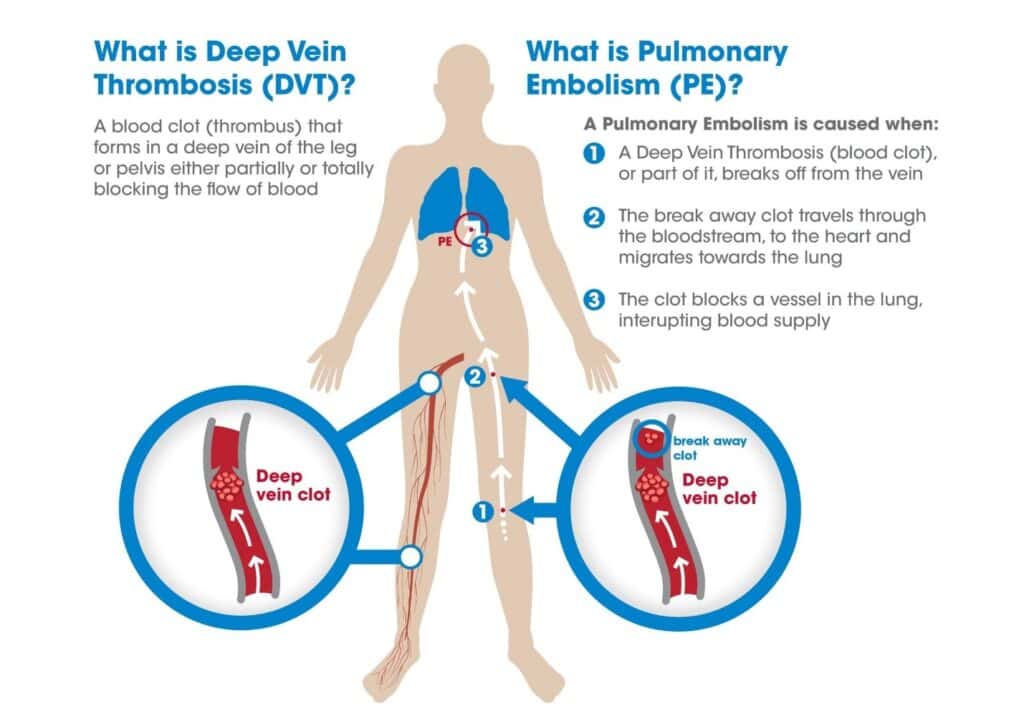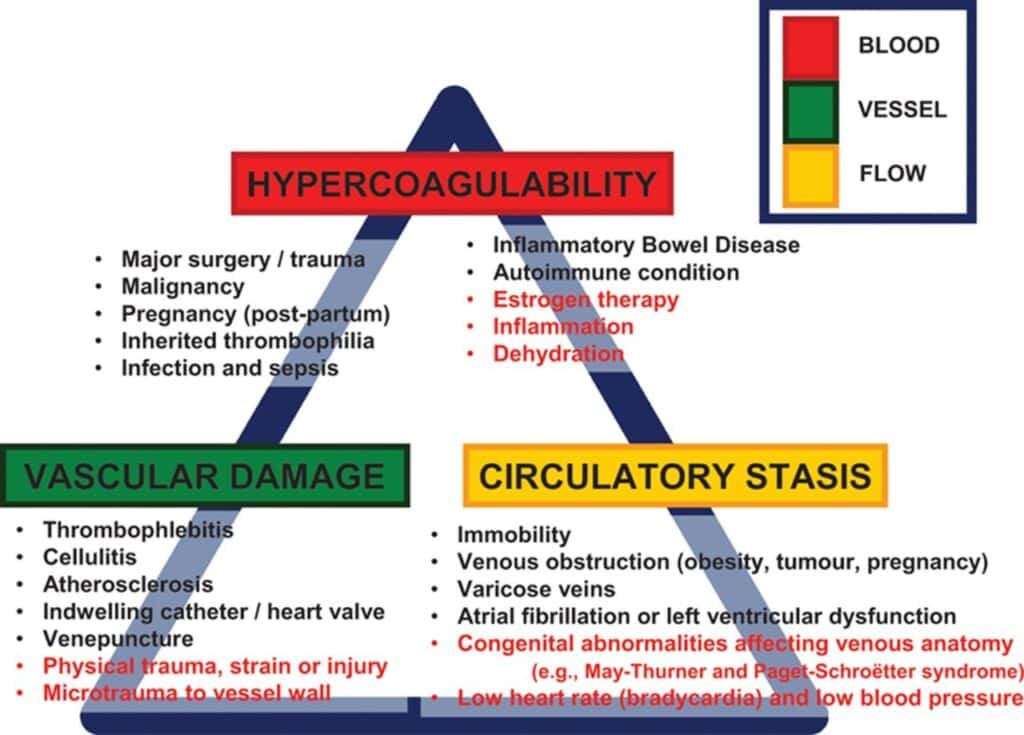Deep vein thrombosis (DVT) is a medical condition in which a blood clot forms in a deep vein, usually in the legs, thighs or pelvis, and can occasionally occur in the arm. It is not uncommon to be affected by DVT in Singapore. If you have developed this condition, it is important to seek professional help. There are many Deep Vein Thrombosis treatments in Singapore. Finding a highly skilled and reputable DVT specialist in Singapore is of utmost importance for individuals dealing with this serious medical condition. With a focus on accurate diagnosis, personalized treatment plans, and comprehensive patient support, individuals dealing with DVT can expect exemplary DVT treatment in Singapore and a better chance at a successful recovery and improved overall vascular health.

(https://www.singhealth.com.sg/patient-care/conditions-treatments/deep-vein-thrombosis-DVT)
Introduction to Deep Vein Thrombosis (DVT)
In many cases, Deep Vein Thrombosis can be treated with medication, particularly for those who have it in the lower legs or arms. However, the risk of a severe and life-threatening complication known as Pulmonary Embolism (PE) is greater when DVT is present in the upper parts of the legs or arms which is nearer to the heart. PE is dangerous because it prevents oxygen from getting to the blood, leading to a high possibility of death.

(https://www.operatingroomissues.org/venous-thromboembolism-dvt-pe-facts/)
Approximately one third to one half of individuals who experience Deep Vein Thrombosis can develop long-term complications known as Post-Thrombotic Syndrome (PTS). Symptoms of PTS may include swelling, discomfort, discoloration, and in extreme cases, scaling or ulcers on the affected area. In certain cases, the effects of PTS can be quite severe and may even lead to disability.

(https://www.nhs.uk/conditions/deep-vein-thrombosis-dvt/)
What are the Causes of DVT?
Anything that prevents the blood from flowing or properly clotting can cause a blood clot. Certain medical conditions such as surgery or inflammation that can damage the veins are the common causes of deep vein thrombosis, along with infections or injuries.
What are the Risk Factors for DVT?
Deep Vein Thrombosis (DVT) is a serious medical condition characterized by the formation of blood clots in the deep veins, typically in the legs. It is essential to be aware of the risk factors that can increase the likelihood of developing DVT, as they play a crucial role in preventative measures and early detection. The more risk factors an individual possesses, the higher their risk of DVT.
Age: Being older than 60 increases the risk of DVT, but it can occur at any age.
Lack of Movement: Prolonged periods of immobility, such as sitting for extended periods during long journeys or being on bed rest due to a hospital stay or medical condition, can increase the risk of DVT.
Injury or Surgery: Vein injuries or surgeries can elevate the risk of blood clots.
Pregnancy: Pregnancy increases pressure in the veins of the pelvis and legs, and the risk of blood clots can persist for up to six weeks after childbirth, particularly in individuals with an inherited clotting disorder.
Birth Control Pills and Hormone Replacement Therapy: Both can enhance the blood’s clotting ability, increasing the risk of DVT.
Being Overweight or Obese: Excess weight can raise pressure in the veins of the pelvis and legs.
Smoking: Smoking affects blood flow and clotting, contributing to the risk of DVT.
Cancer: Certain cancers and cancer treatments can raise substances in the blood that promote clot formation.
Heart Failure: Heart failure can increase the risk of DVT and pulmonary embolism due to compromised heart and lung function.
Inflammatory Bowel Disease: Conditions like Crohn’s disease or ulcerative colitis can elevate the risk of DVT.
Personal or Family History of DVT or Pulmonary Embolism: A history of these conditions in oneself or family members may indicate a higher risk of DVT.
Genetics: Some individuals have genetic changes that make their blood more prone to clotting, such as factor V Leiden, an inherited clotting disorder.

(https://www.ahajournals.org/doi/10.1161/CIRCULATIONAHA.113.004586)
Symptoms of DVT
Symptoms of Deep Vein Thrombosis (DVT) are crucial to recognize as early detection and prompt medical attention can prevent potential complications. DVT symptoms may vary, and some individuals may not experience any noticeable signs. However, common indicators include swelling in the affected leg, often accompanied by pain or tenderness. The skin over the affected area may feel warm to the touch and appear reddish or discolored. Additionally, DVT can cause cramping in the leg that usually begins in the calf, and which then extends to the thigh and groin. In severe cases, DVT can lead to pulmonary embolism, where a blood clot travels to the lungs, causing sudden shortness of breath, chest pain, or coughing up blood.
Diagnosing DVT
If you think you have deep vein thrombosis, it is important to get medical attention right away. Your doctor could do an ultrasound of your affected veins and a Doppler test to assess blood flow. Additionally, a blood test or CT scans may be done to look at the veins in the chest and abdomen for signs of clots.

(https://sjrhem.ca/dvt-pocus-when-where-how-and-what-to-do-next/)
Treatment Options for DVT
Prompt and effective treatment is essential to prevent potential complications, such as pulmonary embolism, and to promote a successful recovery. Fortunately, there are various treatment options available to address DVT, ranging from anticoagulant medications to minimally invasive procedures. Empowering patients with knowledge about treatment options, foster informed decision-making and proactive management of DVT.
Anticoagulants: Medications are typically prescribed to prevent the formation of clots and dissolve existing ones in the veins and arteries. This lowers the chances of pulmonary embolism.
Minimally invasive treatments: In some instances, surgical intervention may be necessary and this can involve either infusing medications into the vein via a long tube/catheter to break up the clot (such as in thrombolysis), or by mechanically removing the clot itself (thrombectomy) by using specialised devices which are introduced via a small puncture wound.

(https://rivercityvascular.com/thrombolysis)
Compression stockings: Compression stockings are worn to help minimize the chances of developing Deep Vein Thrombosis (DVT). These garments apply pressure around the legs and calves to reduce the amount of blood that pools in the veins, thus making DVT less likely to form. Do note that compression stockings are useful for prevention against DVT, but will not be useful if DVT has already occurred.
Anti-Coagulant Medications for DVT Treatment
Anticoagulants are medications that stop blood from clotting and existing clots from enlarging. It is not effective in dissolving existing clots but may reduce it to the point where it becomes small scars in the veins. The duration of treatment may vary from three to six months or may even be indefinite depending on circumstances, such as if a person has had clots before or is being treated for another illness such as cancer or an autoimmune disease. Bleeding is the most common side effect of taking anticoagulants and you should contact your doctor if you notice any signs of easy bruising or bleeding.
Thrombolytic Therapy for DVT Treatment
Thrombolytic therapy involves the use of medications called thrombolytics, which have the unique ability to break down and dissolve blood clots. These medications work by activating a natural process within the body that helps break up the clots, allowing blood to flow freely through the affected veins. Thrombolytic therapy is typically administered through a catheter directly into the clot, ensuring targeted and precise delivery of the medication.
This treatment option is especially beneficial for patients with extensive or severe blood clots, where the risk of complications, such as pulmonary embolism, is high. By rapidly dissolving the clot, thrombolytic therapy can help reduce the risk of long-term damage to the veins and improve overall outcomes.
As with any medical treatment, thrombolytic therapy requires careful consideration by a team of experienced healthcare professionals, including vascular specialists and interventional radiologists. Patient-specific factors, such as overall health, medical history, and the extent of the blood clot, will be taken into account when determining the appropriateness of this treatment approach.
Endovascular Procedures for DVT Treatment
Endovascular procedures are minimally invasive interventions performed within the blood vessels using catheters and imaging guidance. They offer several benefits, including shorter recovery times, reduced risks of complications, and improved patient outcomes.
Endovascular procedures to rapidly soften and remove the blood clot is recommended for patients with clots which have dislodged and travelled to the lungs (as in PE) or for younger patients with a good life-expectancy to reduce their risk of developing post-thrombotic syndrome at a later stage.
Endovascular procedures involved thrombolysis, where a specialized catheter delivers clot-dissolving medication directly to the site of the blood clot, followed by thrombectomy which is the mechanical aspiration of the clot using a suction device. This technique helps dissolve the clot rapidly and restore blood flow, alleviating symptoms and preventing further complications. Balloon (venoplasty) and stenting is also possible using endovascular techniques if after removal of the clot, an underlying narrowing of the vein is detected.

(https://www.bostonscientific.com/en-US/products/thrombectomy-systems/angiojet-thrombectomy-system.html)
Open Surgery for DVT Treatment
Open surgical treatment for DVT involves two primary procedures: Open Thrombectomy and Venous Bypass. Open Thrombectomy is a surgical technique wherein a vascular surgeon physically removes the blood clot from the affected vein via a cut in the vein. This procedure is typically reserved for patients with massive, life-threatening blood clots or those who are unresponsive to other treatment methods. Thrombectomy aims to rapidly restore blood flow and alleviate symptoms, reducing the risk of further complications such as pulmonary embolism.
Venous Bypass is another surgical option used in complex cases where the clot is obstructing a major vein. During this procedure, a vascular surgeon creates a bypass around the blocked segment of the vein, redirecting blood flow and allowing it to bypass the clot altogether. Venous Bypass is a more extensive procedure that may be considered when other treatments have not been successful, or the patient’s condition is critical.
It is important to note that surgical interventions for DVT are not without risks and are typically reserved for cases where other treatments have proven ineffective or in emergencies. Recovery from surgical DVT treatment may take longer compared to minimally invasive procedures, and patients may require post-operative care and rehabilitation.
Compression Stockings for DVT Treatment
You will need to wear graded elastic compression stockings to reduce or completely eliminate leg swelling. Damage to the small valves inside your veins is usually the cause of the swelling. These stockings are usually worn just below the knee, becoming looser as they move away from the ankle, providing gentle pressure. It must be worn daily from morning to evening.

(https://www.cardinalhealth.com/en/product-solutions/medical/compression/t-e-d-anti-embolism-stockings.html)
Tips for Preventing DVT
Making changes to your lifestyle may help to reduce the risk of developing Deep Vein Thrombosis. Move your legs regularly, even if you have had surgery or have been on bed rest. Avoid crossing your legs while sitting as this can restrict blood flow. When travelling, take regular breaks to stretch your legs. On planes, stand and walk around periodically and when driving, stop every hour or so and go for a walk. If you are unable to walk, you can do some lower leg exercises such as raising and lowering your heels while keeping your toes on the floor or raising your toes while keeping your heels on the floor.
Do not smoke as this increases the risk of DVT and manage your weight as obesity is a risk factor. Aim for 30 minutes of moderate physical activity each day.
When to Visit a DVT Specialist in Singapore
Knowing when to visit a DVT specialist in Singapore is crucial for timely diagnosis and effective treatment of Deep Vein Thrombosis (DVT). If you experience symptoms such as swelling, pain, warmth, or redness in one or both legs, especially if it is accompanied by difficulty breathing, chest pain, or coughing up blood, seeking immediate medical attention is essential, as these may indicate a possible pulmonary embolism, a life-threatening complication of DVT. Additionally, if you have certain risk factors, such as a history of blood clots, recent surgery or injury, prolonged immobility, or a family history of DVT, it is advisable to consult a DVT specialist for preventive evaluation and personalized care. Visiting a DVT specialist at the earliest sign of potential symptoms or risk factors can significantly improve treatment outcomes and reduce the risk of complications associated with DVT.
What to Expect from a DVT Specialist in Singapore
When seeking for Deep Vein Thrombosis (DVT) treatment in Singapore, patients can expect expert care and comprehensive support from a DVT specialist. These highly trained medical professionals have specialized knowledge and experience in diagnosing and treating vascular conditions, ensuring that patients receive the most appropriate and effective care for their individual needs.
During the initial consultation, the DVT specialist will conduct a thorough medical history review and physical examination to assess the patient’s symptoms and risk factors. Diagnostic tests, such as ultrasound, may be performed to confirm the presence of blood clots and determine their location and severity.
Once a diagnosis is established, the DVT specialist will work closely with the patient to develop a personalized plan for DVT treatment in Singapore. Throughout the treatment journey, patients can expect ongoing monitoring and regular follow-up visits with the DVT specialist. These appointments are essential to assess treatment progress, manage potential side effects of medications, and address any concerns or questions the patient may have.
A DVT specialist in Singapore will provide comprehensive support and education to patients and their families. They will discuss lifestyle modifications and strategies to reduce the risk of future blood clots. Patients will be empowered with knowledge about DVT prevention, recognizing warning signs, and managing their vascular health proactively.
The Vascular & Interventional Centre provides specialized care for various vascular conditions, with the help of experienced vascular surgeons. The focus is on holistic care and offers personalized and tailored treatments. The centre is equipped with advanced facilities, including a clinic and Day Surgery Centre, making medical care efficient and convenient. If you would like more information or assistance, contact the centre at +65 6694 6270 or email en*****@***********tr.com. Their team is ready to answer questions and assist with appointments or consultations.
Frequently Asked Questions:
Treatment options for DVT in Singapore typically include anticoagulant medications, also known as blood thinners, which help prevent further clot formation and promote natural clot dissolution. In more severe cases, endovascular procedures may be employed to remove or dissolve the blood clot, while surgical interventions are reserved for complex or life-threatening situations.
Yes, adopting certain lifestyle changes can help reduce the risk of developing DVT. Staying physically active, especially during long periods of immobility (e.g., during travel or desk work), can promote blood circulation. Maintaining a healthy weight, not smoking, and following a balanced diet can also contribute to vascular health. If at higher risk for DVT, wearing compression stockings and staying well-hydrated may also be recommended.
Diagnosing Deep Vein Thrombosis (DVT) typically involves a combination of clinical evaluation, medical history review, and diagnostic tests. A qualified healthcare professional, such as a vascular specialist or DVT specialist, will assess the patient’s symptoms, risk factors, and medical history to determine the likelihood of DVT.
The treatment options for Deep Vein Thrombosis (DVT) aim to prevent the blood clot from worsening, reduce the risk of complications, and promote the body’s natural clot-dissolving processes. The primary treatments for DVT include anticoagulant medications, commonly known as blood thinners, which help prevent further clot formation and allow the body to gradually break down the existing clot. Thrombolytic therapy, or clot-busting therapy, is reserved for more severe cases and involves the administration of medications directly into the clot to rapidly dissolve it and restore blood flow. Compression stockings are frequently used in conjunction with anticoagulants to alleviate swelling and improve blood circulation.
Vascular and Interventional Centre is a day surgery center in Singapore that specializes in the diagnosis and treatment of vascular disorders, including DVT. Vascular and Interventional Centre offers consultations, diagnosis, and minimally invasive endovascular procedures.
References:
[1] https://www.singhealth.com.sg/patient-care/conditions-treatments/deep-vein-thrombosisDVT
[2] https://www.sgvascularctr.com/deep-vein-thrombosis-dvt-what-is-it-and-how-is-it-treated/
[4] https://www.mayoclinic.org/diseases-conditions/deep-vein-thrombosis/symptoms-causes
[5] https://my.clevelandclinic.org/health/diseases/16911-deep-vein-thrombosis-dvt
[7] https://www.webmd.com/dvt/dvt-surgery-and-procedures

Dr Chen Min Qi profile
Dr. Chen Min Qi is a fellowship-trained Vascular and Endovascular Surgeon who graduated from the National University of Singapore in 2005. He subsequently completed his basic and advanced training in General and Vascular Surgery while obtaining the Member of Royal College of Surgeons of Edinburgh (MRCSed) qualification in 2010, and the Master of Medicine (General Surgery) qualification in 2015. Dr Chen was subsequently successful at the fellowship exams obtaining the Fellow of Royal College of Surgeons of Edinburgh (FRCSed) qualification in 2016.
Upon completion of his advanced surgical training, Dr Chen Min Qi joined the newly opened Ng Teng Fong General Hospital (NTFGH) as a specialist in the Vascular Surgery division. In 2018, Dr Chen was awarded the Health Manpower Development Plan (HMDP) grant from MOH to undergo further subspeciality Vascular training at the internationally renowned St Mary’s Hospital in London, United Kingdom. There Dr Chen gained further experience in surgeries on complex abdominal and thoracoabdominal aortic aneurysms, redo open repair of abdominal aortic aneurysms following failed EVAR surgeries as well as carotid endarterectomy surgery and lower limb revascularization surgeries.
Upon his return in 2020, Dr Chen Min Qi joined the newly formed Woodlands Health as head of their Vascular service, before joining his current practice at the Vascular and Interventional Centre in January 2023.
- Tags:
- blood clot treatment Singapore
- Deep vein thrombosis Singapore
- deep vein thrombosis treatment Singapore
- DVT awareness Singapore
- DVT blood clot removal
- DVT causes
- DVT complications
- DVT diagnosis
- DVT management Singapore
- DVT medication
- DVT outpatient treatment
- DVT patient care
- DVT prevention Singapore
- DVT recovery tips
- DVT risk factors
- DVT screening
- dvt singapore
- dvt specialist singapore
- DVT symptoms
- DVT therapy Singapore
- dvt treatment singapore
- DVT vein health
- treatment for dvt singapore
